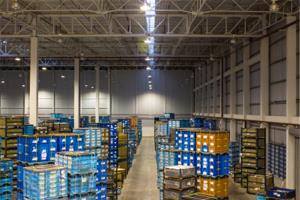Nat cats cannot be avoided, but risk engineering plays an important role in reducing their site-specific impact
Supply chain issues have catapulted into the forefront of people’s minds in recent times, especially after the March 2021 blockage of the vital Suez Canal trading route and the semiconductor plant fire in Japan earlier this year that disrupted global chip supplies.
These issues highlight the threat of micro risks, which are typically specific manufacturers’ risks such as fire, explosions or floods among other things, whose impact can be amplified beyond their locality on a larger scale.
For example, a defective part in the manufacturing process is a micro risk specific to a plant that can cause large-scale product recall. Natural catastrophes and man-made disasters are also site-specific with potentially broader impact across supply chains.
Although natural catastrophes (or, more specifically, the environmental factors that cause these natural catastrophes) cannot be avoided, risk engineering plays an important role in identifying and mitigating the potential property, casualty and liability damages arising from these site-specific risks, which also include utility failures, machinery breakdowns and cyberattacks.
Companies should not only look at mitigating risks specific to their facilities but, as risks amplify across a supply chain, monitor the entire supply chain ecosystem from procurement to distribution and even further down to the customers.
Embedding the practice of risk engineering within a company’s risk culture
Insurance buyers traditionally only think about risk engineering when their insurance policies are up for renewal or when there is a loss event that requires reviewing the risk factors that led to the event. Clients can however benefit from a more proactive approach, engaging risk engineering services before losses happen as part of a holistic and effective risk mitigation plan.
Thus, in carrying out risk engineering services, what risk engineers bring to businesses are extensive experience and expertise from surveying different sites as well as insights into risk mitigation practices of different companies.
This not only allows risk engineers to benchmark a company’s risk mitigation measures against industry best practices but also allows them to identify areas of vulnerabilities more quickly and accurately.
Also, considering the complexity of manufacturing processes, businesses may not always possess the ability to identify vulnerabilities, given they may not be so apparent.
Risk engineers can lend an external set of eyes that see better not just through experience and expertise but also through technology: tools such as drones and thermal infrared imaging can help map site elevation to determine vulnerability to flooding or to detect ice formations and blockages in piping within a facility.
Data also has a key role to play when it comes to mitigating risk. One of the key learnings of the pandemic is that many organisations did not have adequate transparency of the risks embedded in the structure of their supply chains due to a lack of data.
A greater number of data points will provide a better picture of what risk mitigation measures to prioritize. It will also prevent unforeseen risks and potentially nasty surprises by helping to determine the most critical points within a supply chain.
In the future, we will see risk managers relying more heavily on the availability of data sets to provide greater transparency of risks and to make informed decisions about supply chain risks.
Ultimately, developing a healthy risk culture is about regularly facing up to one’s vulnerabilities and improving on them.
We have heard from companies that doing so in partnership with risk engineers allows them to tap into Swiss Re’s real-time data, state-of-the-art technology, and data modelling to derive meaningful mitigation measures that protect their bottom line.
What a changing environment means for corporates
The external environment within which businesses operate and the trends they will need to respond to will only increase the need for risk engineering services over time. For example, accelerating digitalisation means that threats from cyberattacks are growing every day.
Additionally, in Asia, we’ve seen first-hand how the confluence of natural disasters and concentration of supply chains has threatened production across industry sectors. The Thai floods of a decade ago are a case in point, where heavy industrial concentration in Thailand meant that production of everything from cars to computers disk drives worldwide was disrupted.
In forging a more resilient business ecosystem, there are various steps that businesses can take but it starts with mindset change, so that risk engineering is adopted as a pre-emptive (and proactive), rather than reactive, measure as alluded earlier.
By doing so, risks on several frontiers can be monitored, analysed and acted on with the help of emerging technologies and richer data sources.
Risk engineering is a critical component of a comprehensive risk strategy and essential for companies to assess the right level of protection they need. It is particularly valuable in a hardening insurance market where insurance prices are higher, thus making insurance less accessible.
Tze Way Yeong is head, Risk Engineering Services, APAC, Swiss Re Corporate Solutions














No comments yet